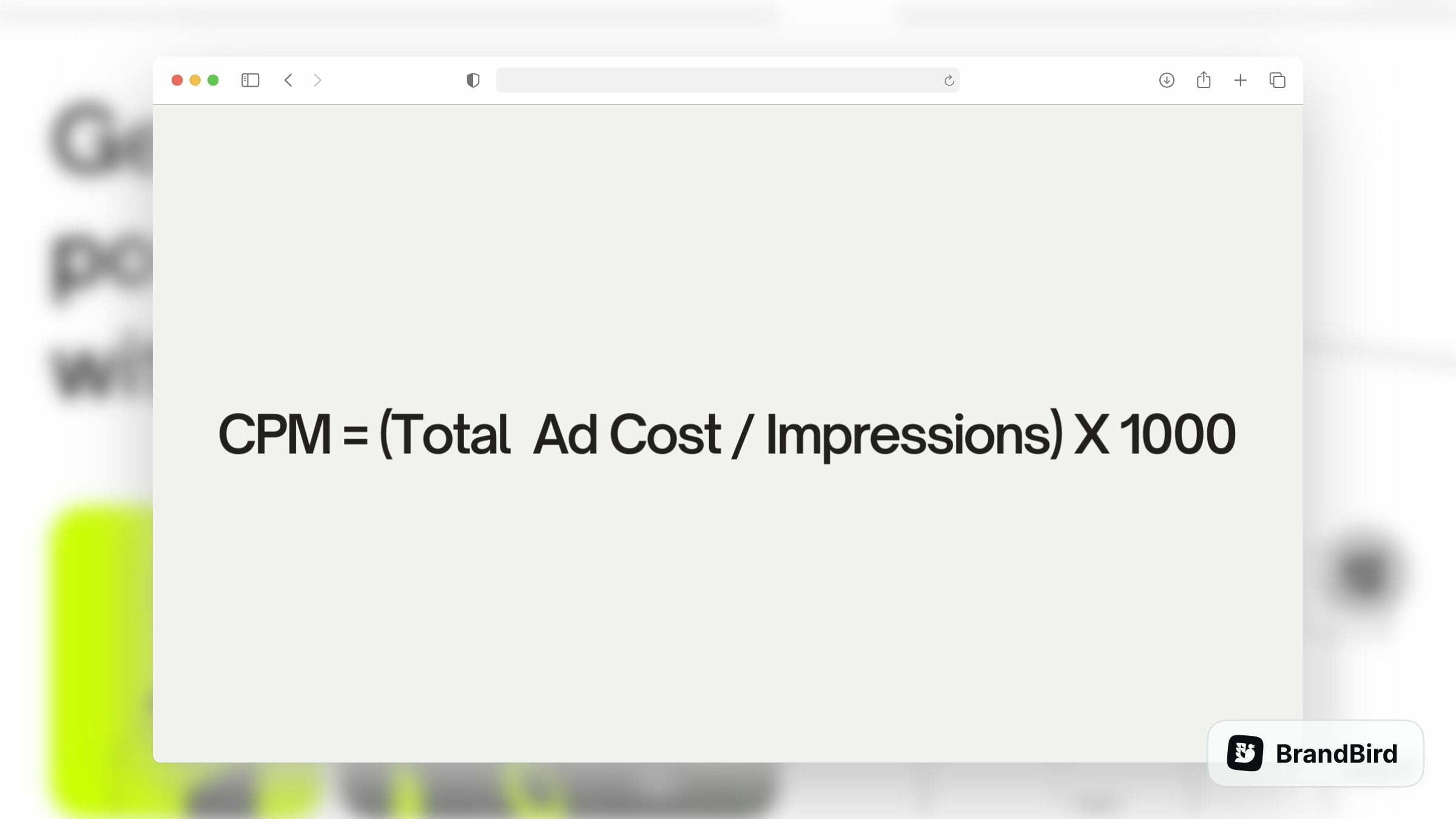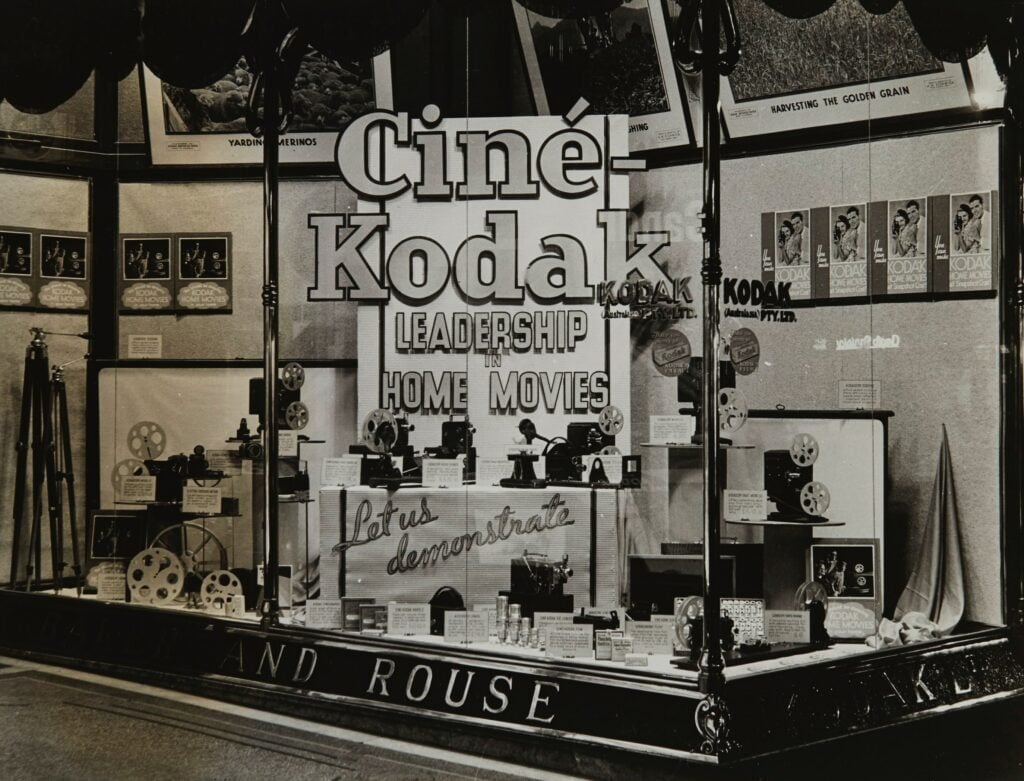Most people think that all advertising is the same, but there are different types of advertising.
If you’re into digital marketing, you might have heard of CPM before, but what does it mean?
And how can you use it to your advantage?
In this blog post, we’ll break down everything you need to know about CPM in marketing. So grab a coffee and get comfortable – we’re about to teach you everything you need to know!
What is CPM in digital advertising?

CPM stands for Cost Per Mille, French for cost per thousand. CPM in marketing can be referred to as online advertising where businesses pay a set fee for every 1,000 times their ad is shown.
CPM campaigns are typically used in raising brand awareness or driving conversions, and they can be an effective way to reach a large audience.
The key to a successful CPM campaign is to choose the proper placement for your ad. Your ad should be placed on a website or app relevant to your product or service. It should be placed where it will be seen by people who are most likely interested in your offer.
With a well-crafted CPM campaign, you can reach a large number of potential customers at a price that fits your budget.
Why your marketing team should care about CPM?
CPM’s marketing strategy focuses on creating and distributing content that will generate leads and sales rather than simply driving traffic to a website.
While CPM in marketing can promote any product or service, it is particularly effective for businesses that sell high-priced items or services.
To succeed, CPM marketers must first identify their target audience and create content relevant to their needs. Once the content has been completed, it must be distributed through channels to reach the target audience.
CPM can be an extremely effective way to generate leads and sales. Still, it requires a significant investment of time and resources.
As a result, your marketing team should carefully consider whether CPM is right for your business before committing.
How to use CPM in your digital advertising strategy?
There are several ways to use CPM in your digital advertising strategy.
The first is to use CPM to raise awareness for your brand. It can be done by placing ads on high-traffic websites or apps relevant to your product or service.
The second way to use CPM is to drive conversions. It can be done by placing ads on websites or apps where people are likely to be in the market for your product or service.
Finally, you can use CPM to retarget potential customers who have already shown interest in your product or service. It can be done by placing ads on websites or apps they have recently visited.
No matter what your goal is, CPM can be an effective way to reach your target audience.
How to measure the success of your CPM campaign?

There are a few different metrics that you can use to measure the success of your CPM campaign.
The first is reach, which is the number of people who have seen your ad.
To measure the success of CPM in a marketing campaign, businesses can track their reach or the number of people who see the ad.
Reach is typically measured in terms of CPM or Cost-Per-Mille. By tracking their CPM, businesses can determine how many people see their ad and how much it costs to reach 1,000 people.
This information can help businesses to adjust their CPM in marketing campaigns to be more successful and efficient.
The second is frequency, which is the number of times your ad has been shown to each person.
CPM through frequency is a great way to measure the effectiveness of your marketing campaigns. Frequency, or the number of times someone is exposed to an ad, is an important metric.
A high CPM but low frequency means that people see your ad but not often enough to make an impact. On the other hand, a low CPM but high frequency means that people visit your ad frequently but ignore it.
The key is to find a balance between CPM and frequency to reach your target audience with your message without breaking the bank.
Finally, you can measure conversion rate, which is the number of people who have taken action after seeing your ad.
The conversion rate is a good metric to track because it shows how effectively your CPM has worked in a marketing campaign to drive sales or leads.
To calculate the conversion rate, take the number of people who have taken action after seeing your ad and divide it by the total number of people who have visited it.
For example, if 100 people see your ad and 10 buy your product, your conversion rate would be 10%.
By tracking reach, frequency, and conversion rate, you can get a good idea of your CPM in a marketing campaign’s effectiveness and make adjustments as necessary.
CPM can be an effective way to reach your target audience and drive conversions. However, it’s essential to consider your goals before committing carefully.
An easy formula would be:
A $1 CPM means you will pay $1 for every one thousand impressions or views of your ad.
Therefore cost per thousand impressions would be
CPM = (Total Ad Cost/Impressions) * 1000
What factors influence CPM?
There are a few different factors that can influence your CPM.
The first is the quality of your ad. A well-designed ad with relevant, targeted content is more likely to capture attention and result in a higher CPM than an ad poorly designed or irrelevant to the audience.
The second factor is the placement of your ad. Ads that are placed on high-traffic websites or in prime real estate on a website are more likely to be seen by more people and result in a higher CPM.
Finally, the price of your ad can also influence your CPM. If you’re willing to pay more for your ad, you will likely get a higher CPM.
No matter your budget, there are ways to optimize your ad to get the best possible results.
eCPM vs. CPM
CPM stands for Effective Cost Per Mille. eCPM is viewed from the publisher’s point of view, whereas CPM is viewed from the Advertiser’s point of view.
eCPM = (Total Ad Revenue/Impressions) * 1000
CPM = (Total Ad Cost/Impressions) * 1000
CPM vs. CPC
The CPM vs. CPC (Cost per Click) debate has been going on for years, and there is no clear winner in the battle of CPC vs. CPM pricing models.
Some advertisers like CPM because it can be cheaper than CPC. CPM pricing is good for advertisers targeting people with informational messages or other content. The goal isn’t to get visitors to take any specific action (e.g., download an ebook).
CPC pricing, in comparison, can be more expensive because it’s designed for those looking for a direct response and want visitors to take some action, such as making a purchase.

CPC pricing can be more expensive doesn’t mean CPM pricing is always the better option for advertisers.
CPM advertising gives you more value than CPC because it’s cheaper to get someone to look at an ad on their screen than to get them to click on it. CPM may be a better option for advertisers looking for exposure, including informational or branding messages.
Suppose you are an advertiser who wants a direct response from your visitors, such as making purchases. In that case, the CPC pricing model might work best because you pay for the Clicks, not just impressions.
Frequently Asked Question
What’s a good CPM?
What’s a good CPM?
A good CPM varies depending on your goals. A lower CPM is fine if you’re looking for brand awareness because you’re not as focused on getting people to take action.u003cbru003eu003cbru003eA higher CPM might be worth it if you’re looking for a direct response because you’re more likely to get people to take action.u003cbru003eIt depends on your goals and what you’re willing to pay.
What’s the difference between CPM and CPA?
CPA stands for Cost Per Action. CPA is a pricing model where you’re only charged when someone takes a specific action, such as making a purchase.u003cbru003eu003cbru003eCPM is a pricing model where you’re charged for every thousand times your ad is shown, regardless of whether anyone takes action.u003cbru003eu003cbru003eCPM is usually cheaper than CPA because you’re not paying for specific actions.
What’s the difference between CPM and CPR?
CPR stands for Cost Per Rating. CPR is a pricing model that charges you every time someone rates your ad.u003cbru003eu003cbru003eCPM is a pricing model where you’re charged for every thousand times your ad is shown, regardless of whether anyone rates it.u003cbru003eu003cbru003eCPR is usually more expensive than CPM because you’re paying for specific ratings.
What’s the difference between CPM and CPV?
CPV stands for Cost Per View. CPV is a pricing model that charges you every time someone views your ad.u003cbru003eu003cbru003eCPM is a pricing model where you’re charged for every thousand times your ad is shown, regardless of whether anyone views it.u003cbru003eu003cbru003eCPV is usually more expensive than CPM because you’re paying for specific views.
What is the difference between CPM and CTR?
CTR stands for Click-Through Rate. CTR is a metric that measures the percentage of people who click on your ad after seeing it.u003cbru003eu003cbru003eCPM is a pricing model where you’re charged for every thousand times your ad is shown, regardless of whether anyone clicks on it.u003cbru003eu003cbru003eCTR is usually more important than CPM because it measures the effectiveness of your ad.
The Bottom Line:
So there you have it – a crash course in CPM in marketing. It’s not as daunting as it may seem, and with the right tools and advice, you can be on your way to successful campaigns in no time at all. Are you ready to give CPM a try?




